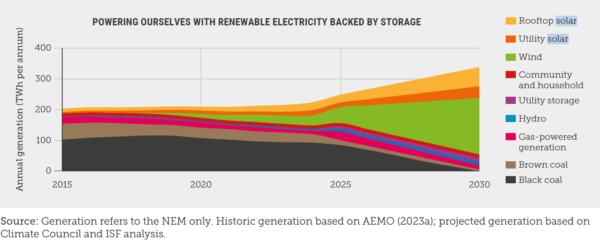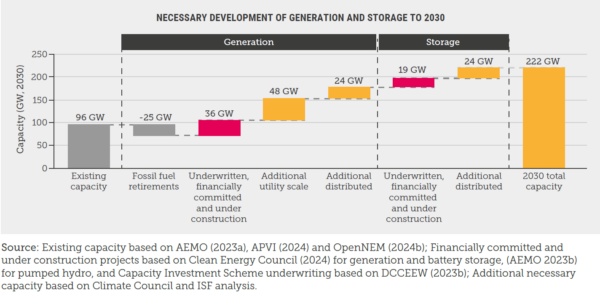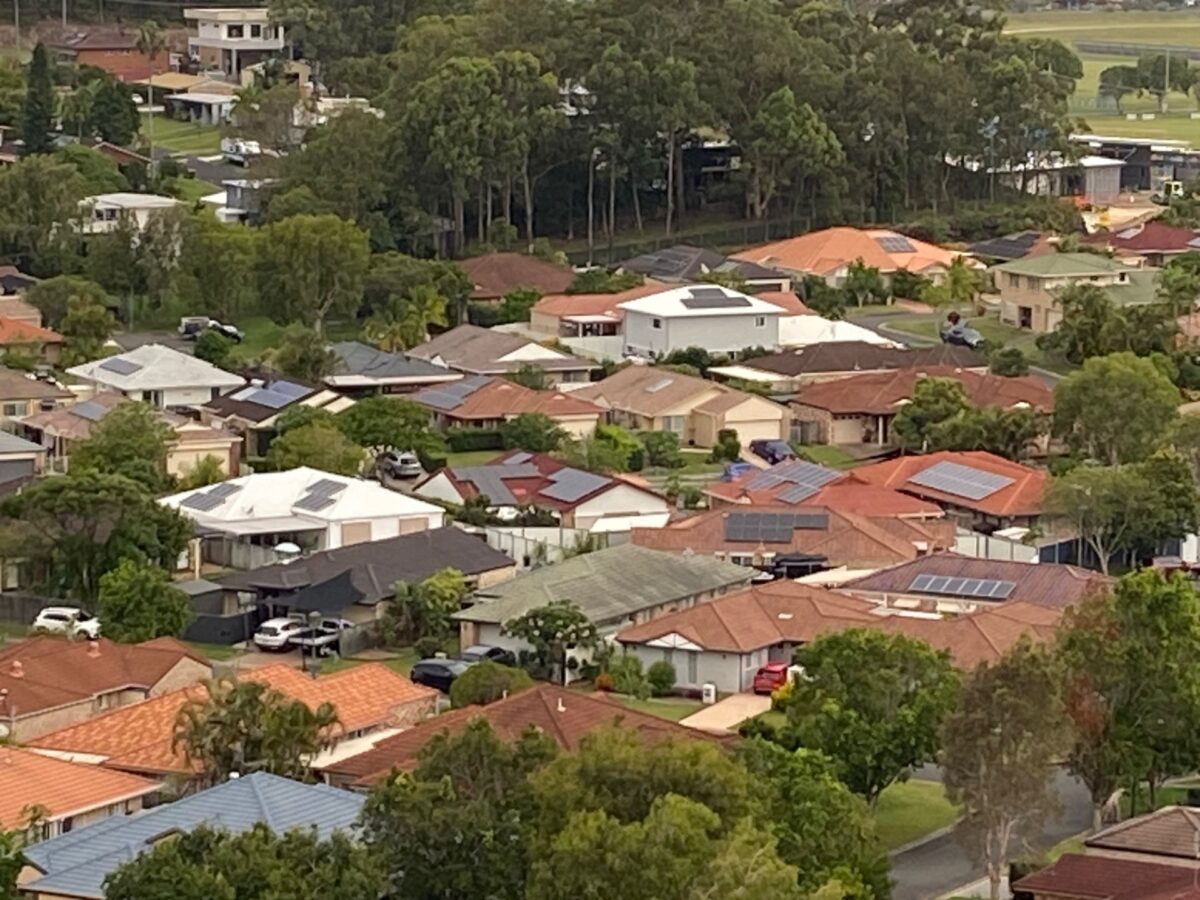Solar generation, battery storage, transmission and electrification can future-proof Australia’s economy while cutting climate pollution by 75%, says independent organisation Climate Council in a new ‘Seize the Decade’ report.
Offering bold targets to achieve that goal in six years, the report says a target of 113 GW for large-scale capacity to reduce pollution, is already in sight based on existing rooftop solar and large-scale renewable projects, built or in the pipeline.
The ‘to do’ list includes growing the current 40% of electricity to the national grid coming from renewable sources to 94% by 2030, through increasing rooftop solar from the current three million households to four million, totalling 24 GW, and matched by 24 GW of new storage from two million household batteries and 5,000 community batteries.
Renewable solutions are to counter electricity generation, storage, and transmission of power created by burning coal, oil and gas, which still creates 30% of national emissions, though reduced since 2005 by 29%, but expected to emit 139 Mt CO2e in 2024.

The report proposes eliminating all climate pollution in electricity production from 2024 onward, down to 12.7 Mt CO2e by 2030, a reduction of 90%.
Industry creates 36% of national emissions, which has increased 18% since 2005–the benchmark year on which Australia’s 43% emission reduction target is based – and is expected to emit 164 Mt CO2e in 2024, needing to be halved by 2030.

The Climate Council proposes a policy to expand a renewable electricity grid backed by storage, called Aussie Solar Drive, which would prioritise expansion of solar power to households and businesses.
Initiatives would build on scaling up community solar banks for people in apartments and rental properties, free solar on public housing, and updating of the National Construction Code to make it mandatory for all suitable new and substantially rebuilt homes to have rooftop solar.
Also under the Aussie Solar Drive, commercial and industrial building owners would be required to install a minimum amount of solar on their premises, with certificates to be earned to sell to other businesses unable to install an equivalent amount.
Among other initiatives, planning laws would need to be upgraded to require new commercial buildings and car parks to have solar panels, similar to France and Germany.
Social license for communities in proximity to large-scale renewable utility is recommended to include a community-led submissions and proposals structure for input on where renewable energy infrastructure and storage projects should be located.
It could also involve business and community groups to identify commercial, industrial and large-scale community sites which are suitable for hosting rooftop solar at scale, the report says.
The environmental footprint of solar panels, wind turbines and lithium batteries will require a domestic recycling industry to be introduced no later than 2025, and a strategic supply stability initiative to address supply chain pressures.
A final policy recommendation covers the minimum energy performance standards for residential and commercial buildings, with 8 million homes currently rated at 1.7 out a possible 10 on the NatHERS energy rating.
At the 2023 United Nations international climate change conference in Dubai (COP28), countries agreed to work together to triple the world’s installed renewable energy capacity by 2030.
This content is protected by copyright and may not be reused. If you want to cooperate with us and would like to reuse some of our content, please contact: editors@pv-magazine.com.








By submitting this form you agree to pv magazine using your data for the purposes of publishing your comment.
Your personal data will only be disclosed or otherwise transmitted to third parties for the purposes of spam filtering or if this is necessary for technical maintenance of the website. Any other transfer to third parties will not take place unless this is justified on the basis of applicable data protection regulations or if pv magazine is legally obliged to do so.
You may revoke this consent at any time with effect for the future, in which case your personal data will be deleted immediately. Otherwise, your data will be deleted if pv magazine has processed your request or the purpose of data storage is fulfilled.
Further information on data privacy can be found in our Data Protection Policy.